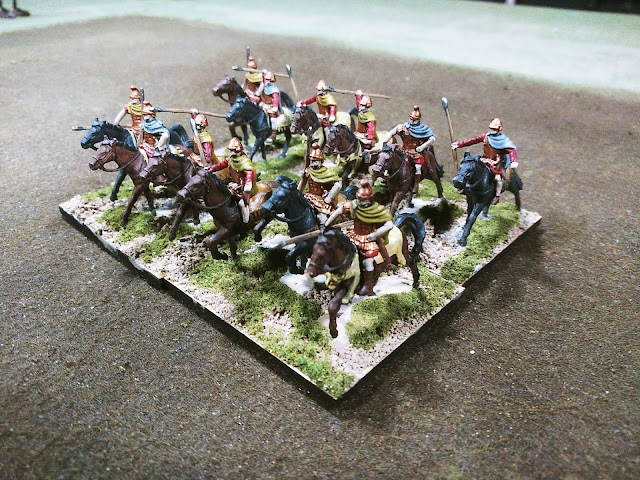 |
| Round 1 underway, with me being dumb and threading my Brutes too far out by themselves where they could get shot to pieces. |
I was able to meet Pete for our first in-person game since September of last year. Because he had converted a figure or two in the Turnip28 style, we agreed to give the Version15a rules of Turnip28 a go.
 |
| The big aquarium stumps work very nicely with the 54mm scale figures. |
Unlike the previous game, I had a better basic understanding of the rules, and we were also able to use suitable 'grimdark' terrain like the plastic Citadel woods and some aquarium decor, which really helped make the whole visual effect come together!
 |
| My Chaff (skirmishers) are trying to flank on the right. |
I had also put together five objective markers in the form of little sacks of turnips, so we played the 'The Long March' scenario as written (actually, its the only scenario in the book at the moment).
 |
| Pete's Chaff by contrast is right in the middle of it. |
I took far more casualties but by turn 4 (of 4) each of us still controlled 2 objectives and the central objective was still up for grabs. My last two activations of the last round very nearly did succeed in (re)capturing that last objective, so the game was fun (and funny) and also challenging, which is always good.
 |
| My Brutes (elites) having been pushed back, my two Fodder units (in the backgrond) have attempted to press into the center. |
Unlike my previous game, I did better making sure the special rules were actually used for Fodder and Brutes. We also had "two scenario blunders," wherein each of us had a "Lost" unit blunder an activation and eat 1d3 of their own compatriots as a result!
 |
| My Brutes (with yellow kite shields), who have fallen back with two Panic markers. The Fodder up ahead however has taken three Panic markers. |
There was quite a few laugh out loud moments at the absurdity of the game, with units losing figures at a constant clip.
 |
| My root-infected Toady (a subcommander) tries to direct my attempts to hold out in the middle. |
As before, the four terrain pieces on a 4'x'4 board really clogs up available open spaces, and makes the resultant battle the sloppy mess which the game's aiming for anyways.
 |
| Pete's Toff (warlord). |
A great way to dive back into in-person games! Not sure where I'm going with this Turnip28 stuff, really, but it a nice small game that's easy to transport and fun to look at.
 |
| Final melee of the game. |

























